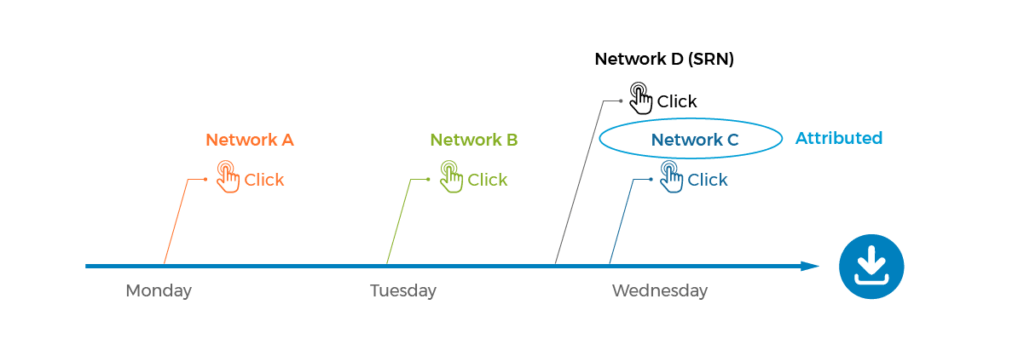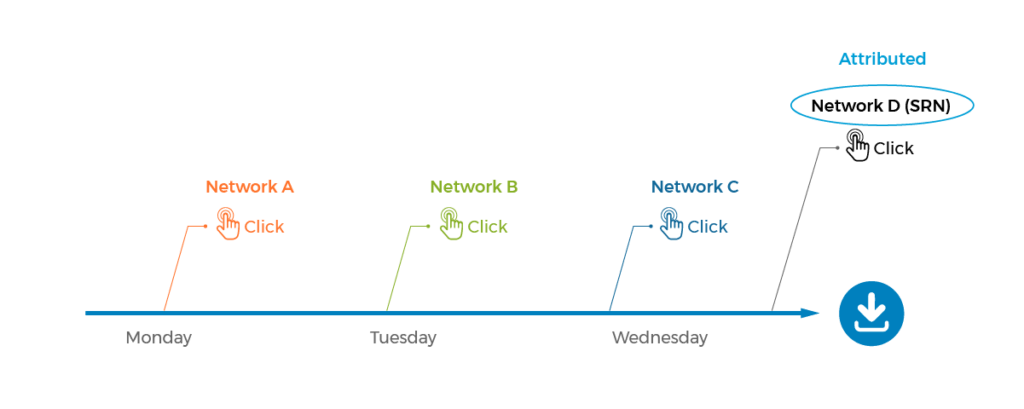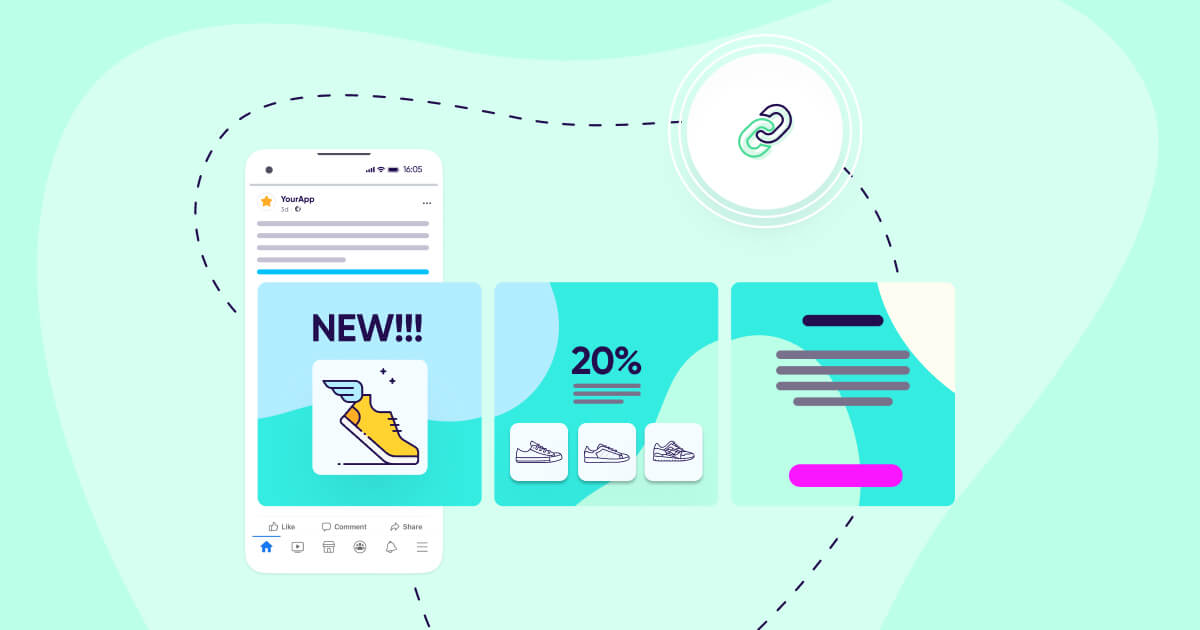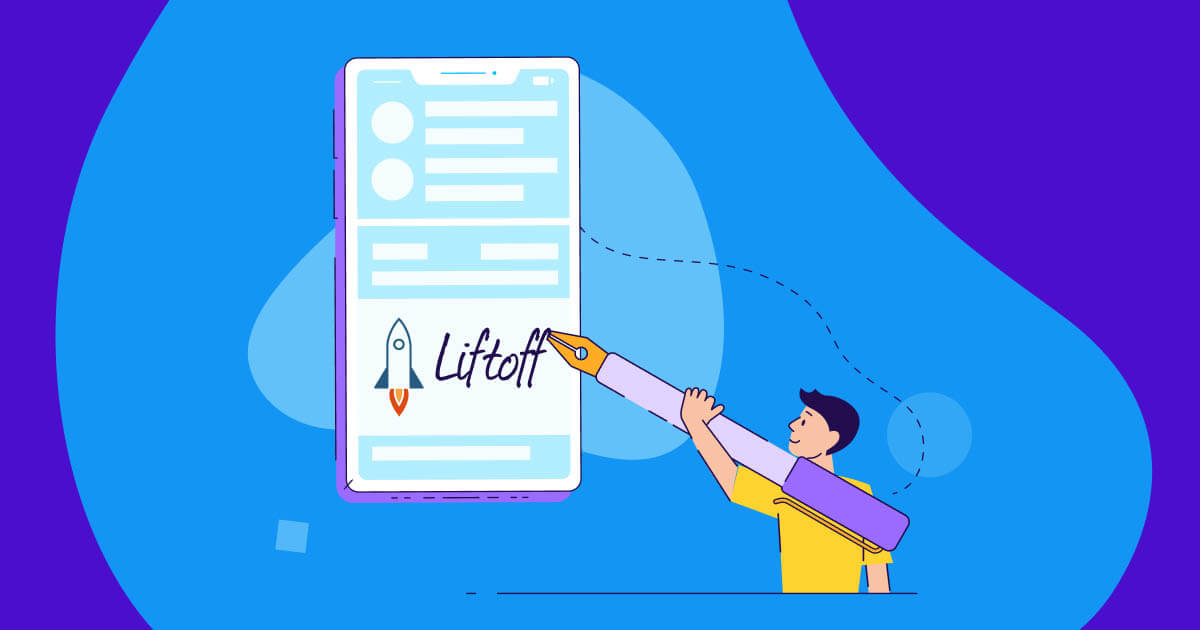
Explaining attribution from self-reporting networks


Over the last few months, there has been some confusion around how self-reporting networks (SRNs) integrate with measurement providers.
Though some in the industry refer to these players as Self-Attributing Networks, we have found that this designation is misleading. Referring to them as self-reporting networks better reflects the nature of our mutual relationship as partners.
In any event, I would like to take a moment to correct some common misinformation, hopefully shedding some light on an often misunderstood topic.
How attribution normally works
In your typical customer journey, a user may be exposed to or even interact with multiple ads before installing an app.
A good attribution provider will provide you with both last-touch attribution, attributing the install to the last click before the install, as well as multi-touch insights that expose the broader customer journey pre-install.
For example, let’s say Network A reported a click from a user on Monday, Network B reported a video engagement on Tuesday, and then Network C reported an additional click on a playable ad on Wednesday – resulting in an install about thirty minutes later. In this case, AppsFlyer would attribute the install to Network C, and give credit to the previous networks as having assisted the install.
Bonus: We even provide the option to access to all available touchpoints prior to install data so that marketers can further customize their own multi-touch or fractional attribution models.

How 3rd party attribution providers work with SRNs
A handful of the largest networks use a different methodology.
Rather than reporting each click to attribution and measurement partners, these networks create an open data sync with specific attribution and measurement providers. Whenever the attribution provider sees an install, the attribution provider uses a proprietary API to sync the DeviceID with the network. The network then reports the details of any relevant ad clicks or impressions.
At AppsFlyer, we then sequence all relevant impression and click data, using our standard attribution logic to attribute the install based on both last touch and multi-touch methodologies.
Continuing the example above, let’s say Network D, an SRN, reported a click a few minutes before Network C, which uses a standard attribution integration.
In this case, Network C would be attributed as the primary driver of the install, because Network C drove the last click.

However, if Network D drove the last click, Network D would be credited with the install.

The misconception
Playing on the title Self-Reporting Networks, some have suggested that it large players (SRNs) can unfairly claim credit for any install, effectively stealing installs from the non-SRNs
While I cannot speak to other attribution providers, Self-Reporting Networks do not override our attribution logic. Rather, Self-Reporting Networks report their click or impression times via a different mechanism.
AppsFlyer’s attribution logic remains constant for all network partners, regardless of how the network’s pre-install click and impression data is synced.
What about attribution lookback windows and view through?
Another common misconception is that SRNs use their own, extended attribution lookback windows, as well as view-through reporting to take far too much credit.
Once again, this is based on a simple misunderstanding as to how marketers use third-party attribution and analytics.
While some SRNs may charge advertisers for an install (CPI) or subsequent action (CPA) based a click or impression that occurred 14 of 28 days ago, AppsFlyer will attribute the install, activity, eCPI and eCPA based on the advertiser’s preferred attribution methodology and lookback windows.
While the marketer may still have to pay for installs based on the SRNs attribution lookback window and view-through models, marketers look to AppsFlyer’s third-party universal attribution methodology to optimize and allocate their spend because we report the actual eCPI and eCPA based on the marketer-defined terms.
From this perspective, SRNs may benefit in the short term, because they often define their own payment terms.
However, marketers balance the playing field by using third-party attribution providers.
Moving forward
As the VP of Global Partner Development at AppsFlyer, I lead a global team invested in building and maintaining productive relationships with all our network partners.
We are trusted by the world’s largest marketers because we are fully unbiased and transparent, maintaining no financial interest in or relationship with any networks or DSPs. Our only interest is in clean, clear and transparent measurement.
AppsFlyer’s collaborations with our nearly three thousand integrated partners, from knowledge sharing and data syncing, to roadmap alignment and co-hosted events, continues to be a source of great pride for our organization and ecosystem.
I wrote this post to help inform and guide our industry conversation as well as to correct any misinformation or misconceptions.
Please feel free to contact your AppsFlyer sales, partner development or customer success representative with any questions.
We look forward to speaking with you!





